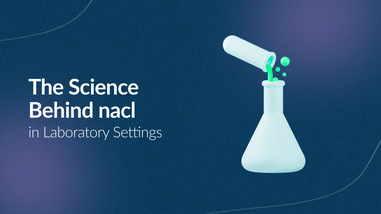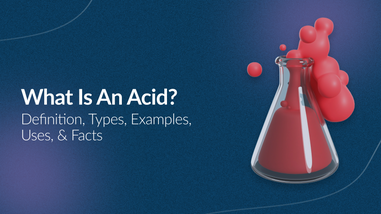- No products in the cart.
Ethanol is used everywhere, from cleaning products and pharmaceuticals to manufacturing and fuel. Its versatility makes it a vital ingredient in many industries. However, not all ethanol is the same. There are two main types: denatured and non-denatured ethanol.
Understanding the differences between these two is key for anyone using ethanol in their business or lab. Whether you're cleaning equipment, conducting experiments, or making products, knowing which type of ethanol is right for your needs can save time, money, and ensure safety.
Key Takeaways:
-
Denatured ethanol contains additives that make it toxic and unfit for consumption, primarily used in industrial applications.
-
Non-denatured ethanol is pure ethanol, suitable for consumption and used in products like alcoholic beverages, pharmaceuticals, and lab research.
-
Denatured ethanol is cost-effective and exempt from excise taxes, making it ideal for non-consumable uses.
-
Non-denatured ethanol is more expensive due to its purity and regulatory requirements for consumable products.
-
When choosing between denatured vs undenatured ethanol, consider the application’s purity requirements and regulatory compliance.
-
Both types of ethanol are flammable; proper safety protocols must be followed for handling and storage.
What Is Denatured Ethanol?

Denatured ethanol is ethanol that has been treated with additives, like methanol, isopropyl alcohol, acetone, or denatonium benzoate, making it unsafe to drink. The purpose of denaturation is to prevent misuse by discouraging recreational consumption. It also avoids taxes that are typically applied to consumable alcohol.
The additives serve to make the ethanol toxic or bitter, which ensures it cannot be consumed without serious harm. This is especially important in industries that need large amounts of ethanol for non-consumable uses.
Denatured ethanol has several industrial applications. It’s used as a solvent in manufacturing processes, a fuel additive in biofuels, and a cleaning agent in industries that require fast evaporation. It’s also a key component in medical antiseptics and disinfectants, making it essential for sanitizing equipment in healthcare settings.
While denatured ethanol is useful, it’s also highly flammable and toxic. Proper storage and handling are crucial to ensure safety. Always use ventilated areas, wear protective gear, and store it in sealed containers to avoid accidents.
What Is Non-Denatured Ethanol?

Non-denatured ethanol (also known as pure ethanol or 100% ethanol) is ethanol in its purest form, free from additives. It is suitable for consumption and is widely used in industries where high-quality ethanol is necessary.
The primary applications of non-denatured ethanol include the production of alcoholic beverages such as vodka, whiskey, and gin, where its purity is essential to flavor and quality. It’s also widely used as a solvent in pharmaceuticals, for medications, and in laboratory applications for experiments that require precise, uncontaminated results.
However, non-denatured ethanol is heavily regulated. Because it is consumable, it’s subject to excise taxes and strict permitting requirements. This makes it more expensive than denatured ethanol. Producers must comply with federal and state regulations to obtain the necessary permits to use and distribute non-denatured ethanol, especially in consumable products.
The purity of non-denatured ethanol is vital. For medicinal purposes, scientific research, and alcoholic beverages. In these industries, any impurities can compromise safety and effectiveness. That’s why maintaining its high quality and adhering to strict production standards is so important.
Also, read:
Denatured Vs Undenatured Ethanol: Key Differences
While both denatured and non-denatured ethanol have the same basic chemical structure, they are used for very different purposes. The differences in their composition, intended uses, safety requirements, and regulatory oversight make it crucial to choose the right type for each application.

Practical Applications Of Denatured And Non-Denatured Ethanol
Both denatured and non-denatured ethanol are highly versatile, but they have different functions across industries. Understanding where and how each type is applied can help you make the right choice depending on your needs. In this section, we’ll explore the various practical applications of both denatured and non-denatured ethanol, from industrial uses to consumer products, highlighting their unique roles in different sectors.
Denatured Ethanol Applications
-
Industrial Solvents: Used in cleaning products, paints, inks, coatings, and adhesives due to their dissolving properties.
-
Fuel Additives: Common in biofuels like E10 and E85, improving combustion efficiency and reducing emissions.
-
Disinfection: Used for cleaning medical instruments and in hand sanitizers and antiseptics.
-
Extraction: Applied in botanical and herb extraction processes, especially in pharmaceutical production.
Non-Denatured Ethanol Applications:
-
Pharmaceutical and Cosmetic Manufacturing: Used in medications, tinctures, perfumes, and personal care products where purity is essential.
-
Laboratory Research: Commonly used in nucleic acid precipitation and as a solvent for biochemical reactions.
-
Beverage Production: The primary ingredient in alcoholic beverages like vodka, whiskey, and gin, ensuring high-quality flavor and purity.
Choosing Between Denatured And Non-Denatured Ethanol
Choosing the right type of ethanol depends on your specific needs and industry requirements. Whether you’re working in manufacturing, healthcare, or pharmaceuticals, the decision between denatured vs undenatured ethanol can significantly impact both cost and product quality.
Considerations for Industry Professionals
When choosing between denatured vs undenatured ethanol, cost-effectiveness is one of the factors that often drives the decision for industrial processes. Denatured ethanol is the better choice for non-consumable applications such as cleaning, extraction, and fuel additives, as it has a lower cost and tax exemptions.
However, when quality and purity are critical, such as in pharmaceuticals, alcoholic beverages, or lab research, non-denatured ethanol is essential because it’s free from additives and maintains high standards of purity.
Specific Industry Needs
In healthcare, denatured ethanol is commonly used in disinfectants and sanitizers for cleaning and sterilizing medical equipment. However, for medical solutions or prescriptions, non-denatured ethanol is required to ensure safety and effectiveness in consumable products.
In manufacturing, denatured ethanol is often used for tasks like cleaning equipment and botanical extraction, where impurities won’t affect the final product. However, for pharmaceutical formulations, where purity is a must, non-denatured ethanol is necessary.
Safety And Storage Guidelines For Both Types Of Ethanol
Handling and storing denatured vs undenatured ethanol requires careful attention to safety and storage conditions due to their distinct characteristics. Both types of ethanol are flammable, but the presence of toxic additives in denatured ethanol makes it more hazardous to work with. Here are the key safety precautions and proper storage guidelines for both types. Ensure that you maintain a safe environment while preserving the quality of the ethanol for its intended use.
Safety Considerations
When handling denatured ethanol, it’s essential to follow strict safety protocols. As it is toxic and highly flammable, always wear protective gear such as gloves and goggles. Work in well-ventilated areas to avoid inhaling harmful vapors, and dispose of it properly to prevent contamination.
Non-denatured ethanol, on the other hand, is safe for consumption in regulated amounts. However, it also requires careful handling. For laboratory and consumer products, ensure proper storage to prevent contamination and degradation.
Storage Conditions
Denatured ethanol should be stored in ventilated areas to allow vapors to disperse, reducing the risk of ignition. Keep containers tightly sealed and away from sources of heat.
Store non-denatured ethanol in sealed containers to maintain its purity and prevent any contamination from external sources.
Both types should be kept in cool, dry places, but non-denatured ethanol especially requires more careful handling to maintain its high quality.
Understanding the differences between denatured and non-denatured ethanol is essential for making the right choice for your industry, whether you're working in manufacturing, pharmaceuticals, or laboratory research. By selecting the appropriate type, you can optimize performance, ensure safety, and remain compliant with regulatory requirements.
At Lab Pro, we specialize in providing high-quality denatured and non-denatured ethanol tailored to meet your specific needs. Whether you need ethanol for industrial use, pharmaceutical manufacturing, or lab research, we offer sourcing, safe handling solutions, and timely deliveries to ensure efficiency and compliance. In addition to ethanol, Lab Pro offers a wide range of laboratory supplies and chemical solutions, including PPE, cleanroom supplies, lab equipment, and solvents. We also provide Vendor Managed Inventory (VMI) services to help businesses maintain optimal stock levels and reduce operational disruptions. Our commitment to speedy delivery and exceptional customer service ensures that you have the tools and materials you need when you need them.
If you're looking for a trusted partner to help you find the right materials for your business, we're here to assist.
FAQs
Can I switch between denatured vs undenatured ethanol depending on the price?
While cost differences between denatured and undenatured ethanol may tempt you to switch, it's essential to match the grade to your specific application. Additives in denatured ethanol may interfere with sensitive processes, especially in labs or pharmaceutical workflows.
Does the term “undenatured ethanol” mean it’s always 100% pure?
No. Although undenatured ethanol (also called non‑denatured ethanol) lacks denaturants, purity can still vary depending on proof, certification (e.g., USP grade), and supplier standards. Always check documentation for the exact specification needed.
Are there limitations when using denatured ethanol in research labs?
Yes. The presence of denaturants in denatured ethanol makes it unsuitable for certain lab tasks, such as nucleic‑acid precipitation or fluorescence assays, because additives can affect downstream results.
How do regional regulations impact my choice between denatured vs undenatured ethanol?
Regulatory factors vary by region. While denatured ethanol is often exempt from excise taxes and can be procured with fewer permits, undenatured ethanol for consumable or medical use may need licenses, special documentation, or stricter control.
What happens if denatured ethanol ends up in a consumable product by mistake?
Using denatured ethanol in consumables can introduce toxic additives into the final product, potentially leading to health hazards and regulatory non‑compliance. It’s critical to verify grade and documentation when sourcing ethanol for sensitive end‑uses.












































